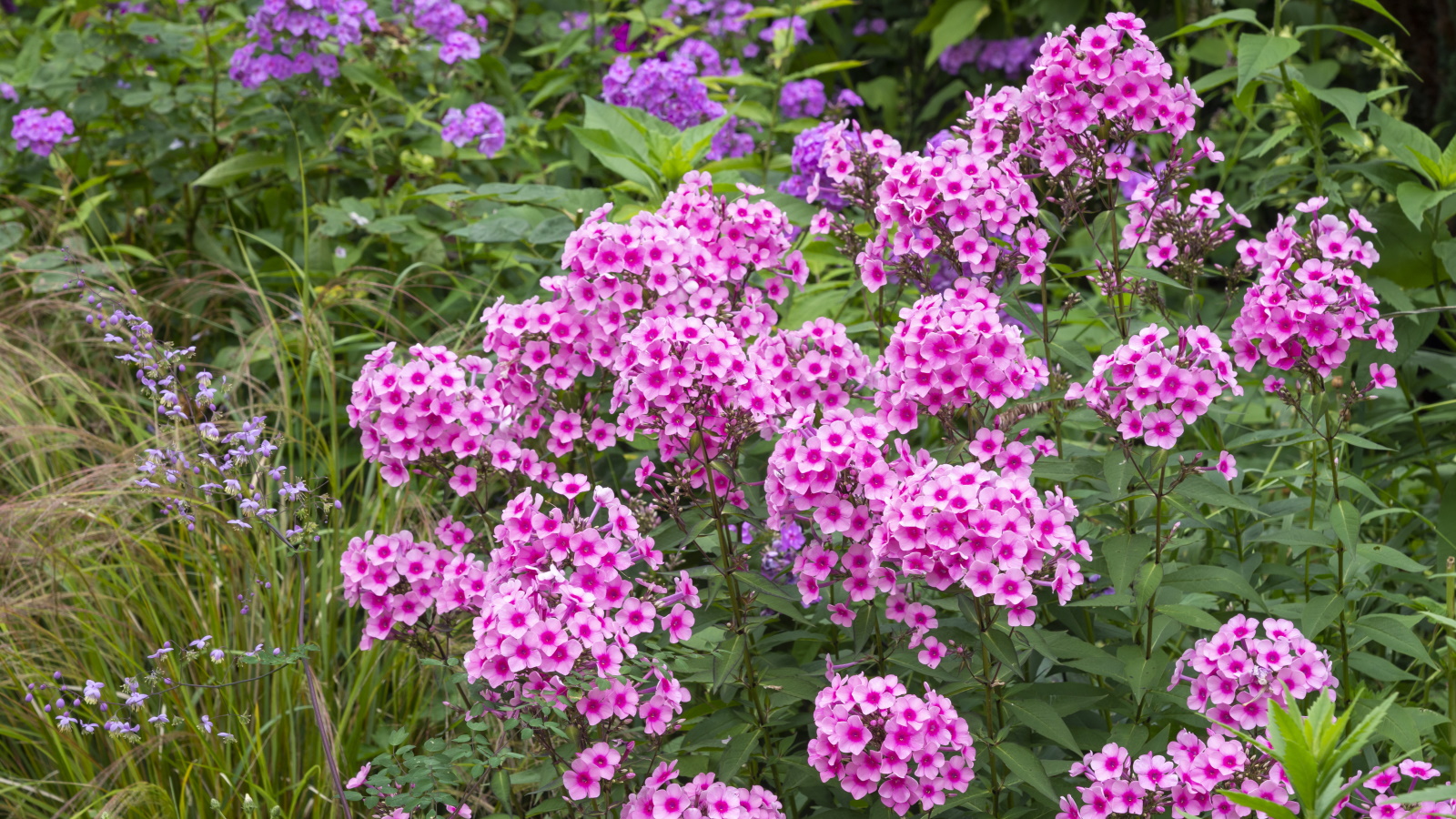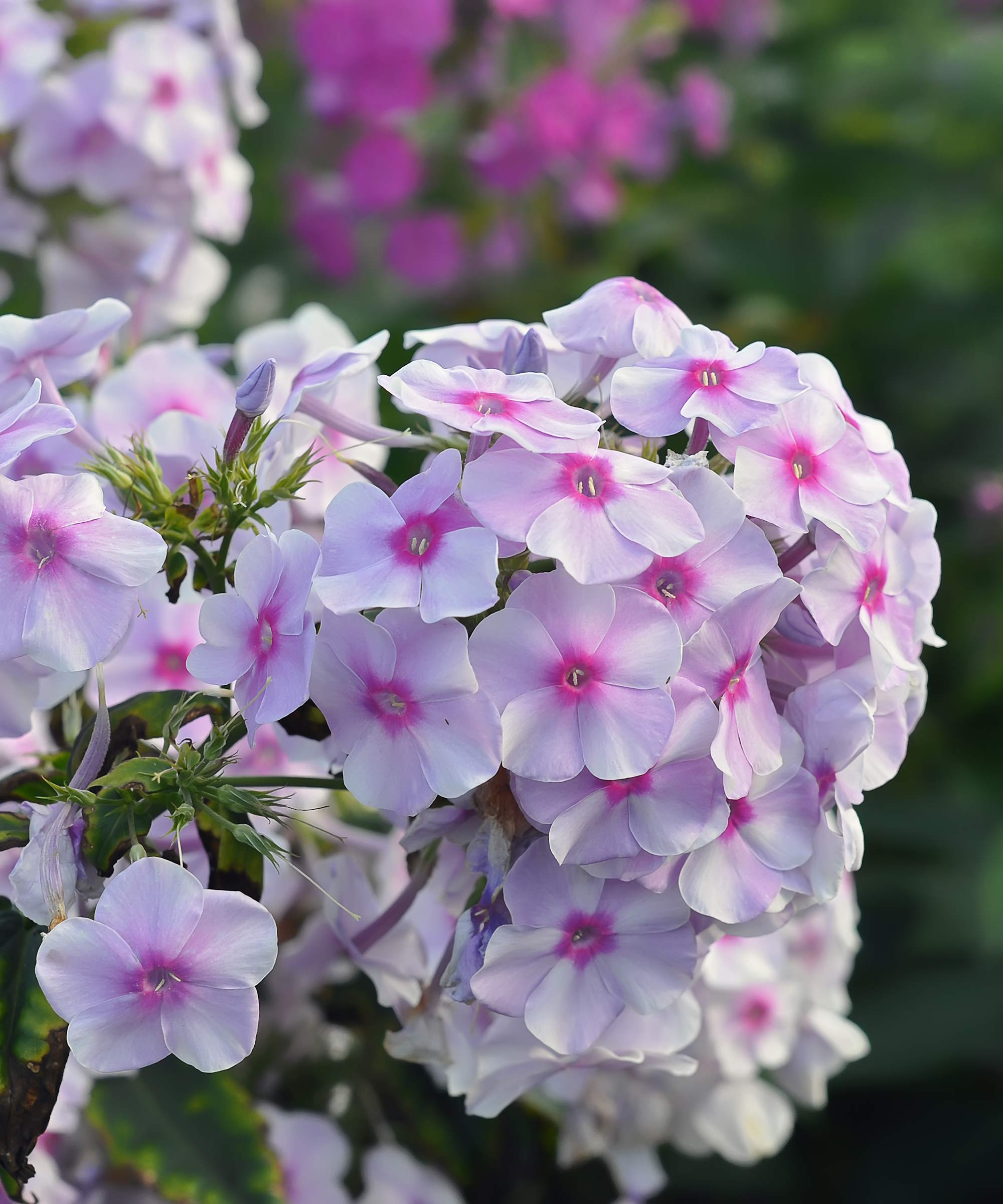How to divide phlox – 3 simple steps to propagate these colorful blooms
Whether you choose to divide phlox in spring or fall, it's easy to grow more of these versatile plants for free


Propagation by division is a quick way to multiply your plants, but it's important to know how to do it properly so you don't hinder the health of your plants. Perennial phlox, for example, can be divided to grow new plants, but it should be done in a particular way to ensure both the parent plant and new plants grow healthily.
If you've already mastered how to grow phlox and enjoy having these vibrant plants in your yard, then you might be keen to grow more. While it's possible to propagate phlox through cuttings, dividing plants can be a much faster way to get new plants.
Before you get started, you should take the time to learn how to do it correctly for successful division. Here, I've compiled a guide to dividing phlox with expert tips on when to do it.

When to divide phlox
There are two times of year you can divide phlox: spring and fall. There aren't any major differences between dividing in the different seasons, but dividing in fall requires some special attention.
If you do choose to divide phlox in fall, it's important to do so early in the season, around four to six weeks before frost hits and after you've deadheaded phlox. In spring, you can divide phlox early in the season before new growth starts to appear.
How to divide phlox
When dividing any garden plants, you need to make sure you have the right essential gardening tools to get the job done. This garden knife from Amazon will work nicely for dividing phlox. Once equipped, you can go ahead and follow the below steps to divide your phlox plants correctly.
1. Water your phlox thoroughly

The first step to dividing phlox is making sure your existing phlox plant is in a healthy state. That's why it's wise to water your plants well before dividing them.
Design expertise in your inbox – from inspiring decorating ideas and beautiful celebrity homes to practical gardening advice and shopping round-ups.
'A day before dividing, you'll want to water the phlox plants thoroughly to make sure the roots don't dry out when transplanting,' explains horticulture expert and founder of Yardwork, Michael Clarke.
Dividing plants requires lifting them from their current position and then replanting them. In this process, roots can dry out more quickly which can hinder the health of the plant.
As well as watering your phlox well, like with this watering can from Amazon, you can also minimize the time your phlox is out of the ground to prevent its roots drying out. For this reason, you might find it preferable to divide phlox during fall when the weather is cooler and the roots retain moisture better than on a warm day.

Michael Clarke is the founder of Yardwork and Pulled, the online platforms for everything home and garden. He has a degree in landscape architecture and horticulture from the University of California Davis.
2. Lift your phlox out of the ground

The next thing to do is lift your phlox from the ground so you have access to the root ball. This is where the division will take place.
'You want to cut around the root ball with a sharp spade and gently lift the plants out from the ground,' explains Michael. 'Try to keep as much of the root mass as possible,' he adds.
Whether you use a garden knife or a garden spade, like this trowel from Walmart, you need to carefully dig your phlox out of the ground with as little damage to the roots as possible.
If your plant is proving difficult to move, try gently twisting it to loosen the soil around the roots. You can then clean your gardening tools to ensure you don't pass on any potential pests or diseases between plants.
3. Separate your phlox into multiple plants

Once you have carefully removed your phlox from the ground, you can focus on the division process. It can be easier to work with the root ball when there isn't so much soil on it, so it can be wise to gently tap the roots to shake excess soil off.
'You'll want to separate the roots into sections using a sharp knife,' says Michael. The key to success here is ensuring each new section has a robust root system and a few shoots already growing from it - the same applies to houseplant division and not doing so is a common houseplant propagation mistake.
'Plant the new divisions immediately, watering them with a vitamin B1 mixture like Superthrive (available at Amazon), to encourage quick rooting and prevent shock,' advises Michael.
Phlox also grows well in pots, so you can choose to plant your new phlox plants in these nursery pots from Amazon as part of a container garden.
FAQs
How do you take phlox cuttings?
It's possible to propagate phlox from both stem cuttings and root cuttings. When taking stem cuttings, take a shoot that is around five or six inches long. Cut just below a leaf node where roots will develop. It's best to take these kind of cuttings in spring before active growth kicks in.
Root cuttings, however, should be taken in winter before new shoots come up in spring. Take root cuttings of around four inches long. It can be helpful to cut at an angle at the bottom of the cutting to increase chances of the roots establishing.
Once your divided phlox plants have been planted up, it's important to provide them with optimal care to ensure they establish as healthy plants. This includes placing them in position with plenty of bright light and providing them with consistent moisture levels, without letting their soil become soggy.
After your phlox plants have flowered, it can also be good to cut back phlox to encourage fuller growth. Just like division, this can happen in either spring or fall, depending on your local climate.

Tenielle is a Gardens Content Editor at Homes & Gardens. She holds a qualification in MA Magazine Journalism and has over six years of journalistic experience. Before coming to Homes & Gardens, Tenielle was in the editorial department at the Royal Horticultural Society and worked on The Garden magazine. As our in-house houseplant expert, Tenielle writes on a range of solutions to houseplant problems, as well as other 'how to' guides, inspiring garden projects, and the latest gardening news. When she isn't writing, Tenielle can be found propagating her ever-growing collection of indoor plants, helping others overcome common houseplant pests and diseases, volunteering at a local gardening club, and attending gardening workshops, like a composting masterclass.